Section1ͲCRAPerformanceEvaluation
PUBLIC DISCLOSURE
July 10, 2023
COMMUNITY REINVESTMENT ACT
PERFORMANCE EVALUATION
The Shelby County State Bank
Certificate Number: 1553
508 Court St
Harlan, Iowa 51537
Federal Deposit Insurance Corporation
Division of Depositor and Consumer Protection
Kansas City Regional Office
1100 Walnut St, Suite 2100
Kansas City, Missouri 64106
This document is an evaluation of this institution’s record of meeting the credit needs of its entire
community, including low- and moderate-income neighborhoods, consistent with safe and sound
operation of the institution. This evaluation is not, nor should it be construed as, an assessment of the
financial condition of this institution. The rating assigned to this institution does not represent an
analysis, conclusion, or opinion of the federal financial supervisory agency concerning the safety and
soundness of this financial institution.
TABLE OF CONTENTS
INSTITUTION RATING .......................................................................................................................... 1
DESCRIPTION OF INSTITUTION ......................................................................................................... 1
DESCRIPTION OF ASSESSMENT AREAS .......................................................................................... 2
SCOPE OF EVALUATION ...................................................................................................................... 3
CONCLUSIONS ON PERFORMANCE CRITERIA.............................................................................. 4
DISCRIMINATORY OR OTHER ILLEGAL CREDIT PRACTICES REVIEW .................................. 6
NORTHWEST IOWA ASSESSMENT AREA – Full-Scope Review ................................................ 6
OMAHA-COUNCIL BLUFFS, NE-IA METROPOLITAN STATISTICAL AREA ASSESSMENT
AREA – Full-Scope Review .............................................................................................................. 10
SIOUX CITY, IA-NE-SD MSA ASSESSMENT AREA – Full-Scope Review ................................... 14
APPENDICES ......................................................................................................................................... 18
SMALL BANK PERFORMANCE CRITERIA ............................................................................ 18
GLOSSARY ................................................................................................................................... 19

1
INSTITUTION RATING
INSTITUTION’S CRA RATING: This institution is rated Satisfactory.
An institution in this group has a satisfactory record of helping to meet the credit needs of its
assessment areas, including low- and moderate-income neighborhoods, in a manner consistent with
its resources and capabilities.
The Lending Test is rated Satisfactory.
• The loan-to-deposit ratio is reasonable given the bank’s size, financial condition, and
assessment areas’ credit needs.
• A majority of the small farm, small business, and home mortgage loans reviewed were
inside the assessment areas.
• The geographic distribution of loans was not performed as there are no low- or moderate-
income census tracts in the assessment areas.
• The distribution by borrowers reflects reasonable penetration among farms and businesses of
different sizes and individuals of different income levels.
• The bank did not receive any Community Reinvestment Act (CRA)-related complaints since
the previous evaluation; therefore, this criterion did not affect the Lending Test rating
DESCRIPTION OF INSTITUTION
The Shelby County State Bank (SCSB) is headquartered in Harlan, Iowa, a rural community located
in western Iowa. The bank is owned by Danes Holdings, Inc., a one-bank holding company located
in Omaha, Nebraska. The bank received a Satisfactory rating at its previous FDIC Performance
Evaluation, dated June 22, 2020, based on Interagency Small Institution Examination Procedures.
The bank operates 13 full-service branches throughout western and northwestern Iowa in the
following communities: Elk Horn, Harlan (2), Irwin, Panama, Portsmouth, and Shelby. The bank
also operates a limited-service branch at a retirement center in Harlan, Iowa. In addition, the bank
opened a new branch in Avoca, Iowa, on February 16, 2021. Avoca is located in Pottawattamie
County, Iowa, which is part of the Omaha-Council Bluffs, NE-IA Metropolitan Statistical Area.
Lastly, the bank merged with the former First State Bank, Ida Grove, Iowa, on February 1, 2022.
This resulted in the subject bank acquiring branches in Battle Creek, Danbury, Ida Grove,
Mapleton, and Odebolt, Iowa. Danbury is located in Woodbury County, Iowa, which is part of the
Sioux City, IA-NE-SD MSA. No other offices have been opened or closed since the previous
evaluation.
SCSB offers traditional loan products including agricultural, commercial, home mortgage,
and consumer loans. The bank’s primary business focus is agricultural lending. The bank provides
a variety of deposit services including checking, savings, money market deposit accounts, and
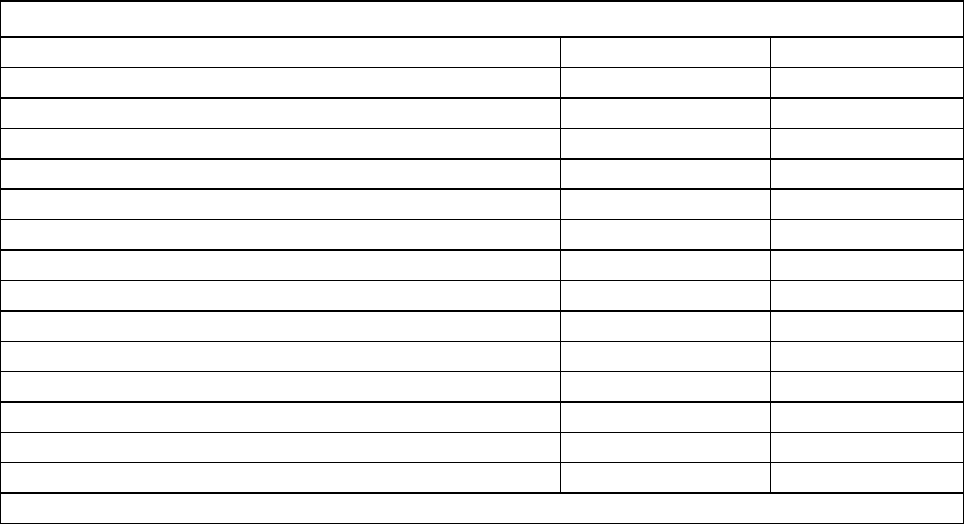
2
certificates of deposits. Alternative banking services include internet banking, mobile banking,
electronic bill pay, account-to-account transfers, and ATMs.
As of March 31, 2023, Consolidated Reports of Income and Condition (Call Report), the institution
reported total assets of $542.0 million, total loans of $337.3 million, and total deposits of $485.9
million. Agricultural loans, including loans secured by farmland, represent the largest loan
category, equaling 67.7 percent of total loans. Commercial loans, including commercial real estate
loans, rank second at 16.3 percent of total loans. Home loans comprises 11.6 percent of the
portfolio. The bank also originates and sells home mortgage loans to secondary market investors;
however, these loans are not reflected in the Call Report data listed below. Since the prior
evaluation, commercial and residential real estate loans have increased slightly while agricultural
loans have decreased slightly by loan portfolio percentage. The following table details the loan
portfolio distribution.
Loan Portfolio Distribution as of 3/31/2023
Loan Category
$(000s)
%
Construction, Land Development, and Other Land Loans
2,028
0.6
Secured by Farmland
92,801
27.5
Secured by 1-4 Family Residential Properties
39,027
11.6
Secured by Multifamily (5 or more) Residential Properties 116 <1.0
Secured by Nonfarm Nonresidential Properties
29,956
8.9
Total Real Estate Loans
163,928
48.6
Commercial and Industrial Loans
25,170
7.4
Agricultural Production and Other Loans to Farmers
135,522
40.2
Consumer Loans
11,139
3.3
Obligations of State and Political Subdivisions in the U.S.
0
0
Other Loans
1,516
0.5
Lease Financing Receivable (net of unearned income)
0
0
Less: Unearned Income
0
0
Total Loans 337,275 100.0
Source: Reports of Condition and Income
Examiners did not identify any financial, legal, or other impediments that affect the bank’s ability to
meet its assessment areas’ credit needs.
DESCRIPTION OF ASSESSMENT AREAS
The CRA requires each financial institution to define one or more assessment areas within which its
performance will be evaluated. The SCSB designated three separate assessment areas: 1)
Northwest Iowa Assessment Area, 2) Omaha-Council Bluffs, NE-IA MSA Assessment Area, and 3)
Sioux City, IA-NE-SD MSA Assessment area. A description of each assessment area is presented
in subsequent sections.
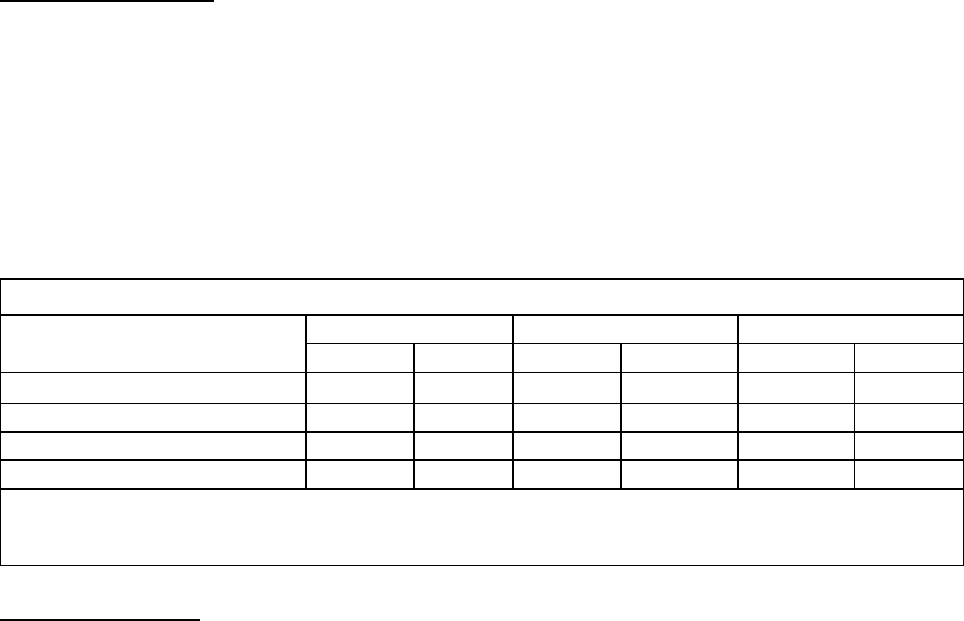
3
SCOPE OF EVALUATION
General Information
This evaluation covers the period from the prior evaluation dated June 22, 2020, to the current
evaluation dated July 10, 2023. Examiners used the Interagency Small Institution
Examination Procedures to conduct the evaluation.
Examiners used full-scope examination procedures to assess the bank’s performance in each
assessment area. The Northwest Iowa Assessment Area received the most weight when evaluating
overall performance based on the breakdown of loans, deposits, and branches inside the respective
assessments areas as depicted in the following table. The table does not reflect loans originated
outside the respective assessment areas.
Breakdown of Loans, Deposits, and Branches
Assessment Area
Loans
Deposits***
Branches
$(000s)
%
$(000s)
%
#
%
Northwest Iowa
182,775*
80.8
470,570
95.3
11
84.6
Omaha-Council Bluffs MSA
36,513*
16.2
3,193
0.6
1
7.7
Sioux City MSA
6,808**
3.0
20,473
4.1
1
7.7
Total
226,096
100.0
494,236
100.0
13
100.0
Source: Bank Records.
*Based on original balances for loans originated between 06/01/2020 thru 05/02/2023.
**Based on original balances for loans originated between 02/01/2022 thru 01/27/2023.
***FDIC Summary of Deposits 06/30/2022.
Activities Reviewed
Examiners selected small farm, small business, and home mortgage loans to evaluate the
bank’s lending performance. Examiners selected these products based on the bank’s business
strategy and number and dollar volume of loans originated during the evaluation period. No
other loan types, such as consumer represent a major product line. As a result, examiners did
not review any other loan products, as they would provide no material support for conclusions
or the rating. The bank’s small farm lending performance received the most weight when
deriving overall conclusions. This is because agricultural loans represent the largest share of
loans by dollar volume.
Bank management indicated that small farm and small business lending in 2022 was generally
representative of the bank’s performance during the entire evaluation period. However, the
bank originated 311 Paycheck Protection Program (PPP) loans in 2020 totaling $10.5 million
and 495 PPP loans in 2021 totaling $9.6 million. Management indicated 2022 represented a
return to more normalized lending. The 2022 D&B data provided a standard of comparison for
the bank’s small farm and small business lending performance.
Examiners reviewed the entire universe of loans to evaluate the Assessment Area
Concentration. Geographic Distribution was not analyzed as none of the assessment areas
include any low- or moderate-income geographies. For the Borrower Profile criterion,
examiners reviewed the entire universe of small farm and small business loans originated in
the Sioux City, IA-NE-SD Assessment Area and the entire universe of the small business loans
originated in the Omaha-Council Bluffs, NE-IA Assessment Area due to limited volume. In
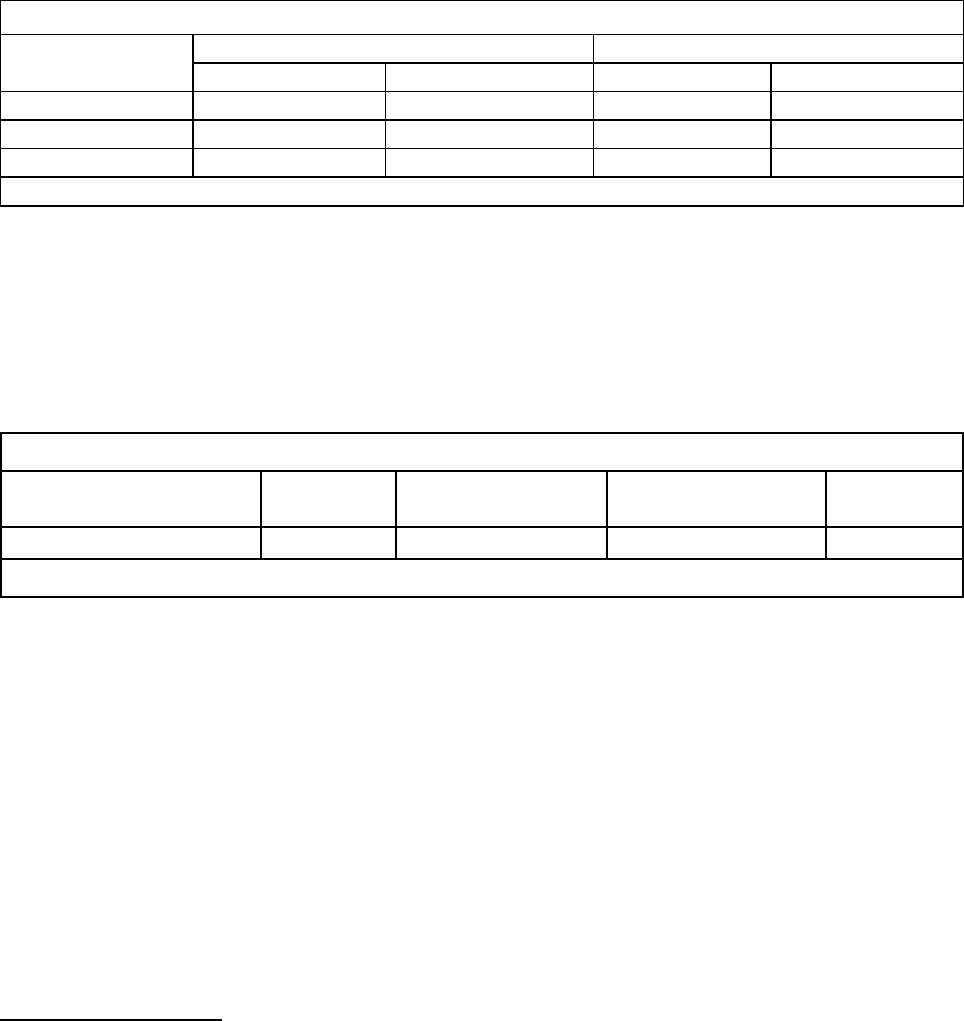
4
addition, examiners reviewed a sample of small farm, small business, and home mortgage
loans originated in the Northwest Iowa Assessment Area and a sample of small farm loans
originated in the Omaha-Council Bluffs, NE-IA Assessment Area. Home mortgage loans were
not reviewed in the Omaha-Council Bluffs, NE-IA or the Sioux City, IA-NE-SD Assessment
Areas as this loan type is not a primary product for these assessment areas. The table below
details the loans reviewed.
Loan Products Reviewed
Loan Category
Universe
Borrower Profile Review
#
$(000s)
#
$(000s)
Small Farm
407
44,839
127
13,238
Small Business
259
24,128
90
8,459
Home Mortgage
115
9,174
48
4,087
Source: Bank Data
The bank was not subject to the Home Mortgage Disclosure Act reporting requirements in 2022;
therefore, examiners used the bank data to identify home mortgage loans. Examiners used the
Federal Financial Institutions Examination Council’s (FFIEC’s) estimated 2022 median family
income figures for the Northwest Iowa Assessment Area to analyze home mortgage loans under the
Borrower Profile criterion. The following table details the income categories for each respective
year.
Median Family Income Ranges
Median Family Incomes
Low
<50%
Moderate
50% to <80%
Middle
80% to <120%
Upper
≥120%
2022 ($78,900)
<$39,450
$39,450 to <$63,120
$63,120 to <$94,680
≥$94,680
Source: FFIEC
While examiners reviewed both the number and dollar volume of loans and presented both figures
throughout the evaluation, examiners emphasized performance by number of loans when
conducting the Borrower Profile analyses. This is because the number of loans is a better indicator
of borrowers served.
CONCLUSIONS ON PERFORMANCE CRITERIA
LENDING TEST
SCSB demonstrated reasonable performance under the Lending Test. Reasonable performance
under the Loan-to-Deposit Ratio, Assessment Area Concentration, and Borrower Profile criteria
supports this conclusion.
Loan-to-Deposit Ratio
SCSB’s net loan-to-deposit ratio is reasonable given the institution’s size, financial condition,
and credit needs of the assessment areas. Examiners also considered the 248 secondary market
loans totaling nearly $38.9 million that are not reflected in the loan-to-deposit ratio. The
bank’s net loan-to-deposit ratio, calculated from Call Report data, averaged 70.1 percent over
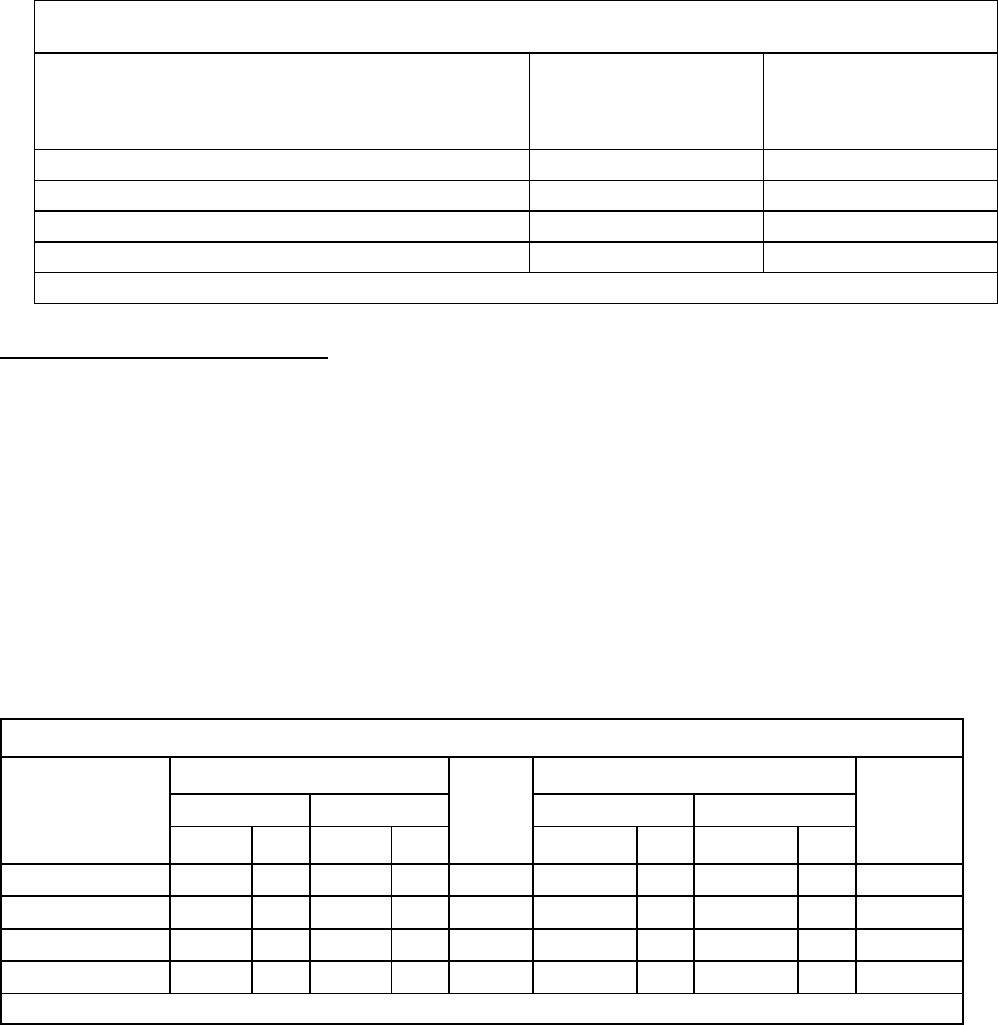
5
the past 12 quarters from June 30, 2020, to March 31, 2023. The ratio ranged from a low of
62.8 percent on March 31, 2022, to a high of 77.2 percent on June 30, 2020. The bank’s net
loan-to-deposit ratio is on a slight downward trajectory since the prior evaluation.
Examiners compared the bank’s average net loan-to-deposit ratio to three other financial
institutions. The comparable institutions were selected based on their asset size, geographic
location, and lending focus. Bank management also indicated the comparable banks listed
below are direct competitors. SCSB’s average net loan-to-deposit ratio is similar to the other
three comparable institutions. The following table provides details.
Loan-to-Deposit (LTD) Ratio
Comparison
Bank
Total Assets as
3/31/2023
$(000s)
Average Net LTD Ratio
(%)
The Shelby County State Bank, Harlan, IA
541,985
70.1
Midstates Bank, National, Council Bluffs, IA
654,586
64.5
Farmers Trust & Savings Bank, Earling, IA 141,624 62.1
United Bank of Iowa, Ida Grove, IA
2,316,503
80.2
Source: Reports of Condition and Income 6/30/2020 through 3/31/2023.
Assessment Area Concentration
Overall, a majority of the loans reviewed, by number and dollar volume, were located inside the
bank’s assessment areas. Although a majority of the small farm loans, by number and dollar
volume, were located outside the assessment areas, a majority of the small business and home
mortgage loans, by number and dollar volume, were located inside the assessment areas. The
majority of small farm loans located outside of the assessment areas were attributed to the bank
purchasing large numbers of participations from an affiliated financial institution. Bank
management indicated loan demand is lower in the area due to competitive forces such as Farm
Credit. As discussed later under the Northwest Iowa Assessment Area portion of this evaluation,
agricultural loan demand has declined due to many farmers having disposable income from recent
stimulus and relief efforts as well not needing credit because of high commodity prices.
Consequently, the bank has had to purchase participations from outside its area to supplement its
lending activity. The following table depicts the bank’s lending activity in its assessment areas.
Lending Inside and Outside of the Assessment Areas
Number of Loans
Dollar Amount of Loans $(000s)
Loan Category
Inside
Outside
Total
Inside
Outside
Total
#
%
#
%
#
$
%
$
%
$(000s)
Small Farm
407
41.1
583
58.9
990
44,839
44.9
55,099
55.1
99,938
Small Business
259
75.7
83
24.3
342
24,128
71.5
9,605
28.5
33,733
Home Mortgage
115
79.3
30
20.7
145
9,174
73.4
3,327
26.6
12,501
Total
781
52.9
696
47.1
1,477
78,141
53.5
68,031
46.5
146,172
Source: Bank Data. Due to rounding, totals may not equal 100.0%.

6
Geographic Distribution
The assessment areas do not contain any low- or moderate-income census tracts, and a review
would not result in meaningful conclusions. Therefore, examiners did not evaluate the geographic
distribution of loans.
Borrower Profile
The distribution of borrowers reflects reasonable penetration among farms and businesses of
different sizes and individuals of different incomes. Reasonable performance in all three
assessment areas supports this conclusion. Details are provided in the applicable assessment
area sections of this evaluation.
Response to Complaints
The bank did not receive any CRA-related complaints since the previous evaluation; therefore,
examiners did not evaluate the bank’s record of responding to CRA-related complaints.
DISCRIMINATORY OR OTHER ILLEGAL CREDIT PRACTICES REVIEW
Examiners did not identify any evidence of discriminatory or other illegal credit practices; therefore,
this consideration did not affect the institution’s overall CRA rating.
NORTHWEST IOWA ASSESSMENT AREA – Full-Scope Review
DESCRIPTION OF INSTITUTION’S OPERATIONS IN THE NORTHWEST
IOWA ASSESSMENT AREA
The Northwest Iowa Assessment Area is comprised of all of Shelby and Ida counties in Iowa,
census tract 0701.00 in Audubon County, census tracts 0701.00, 0702.00, and 0703.00 in Crawford
County, census tracts 9601.00 and 9604.00 in Monona County, and census tracts 0801.00 and
0802.00 in Sac County. The assessment area contains 14 middle-income and 1 upper-income
census tract. Census tracts 0701.00 in Audubon and 0801.00 and 0802.00 in Sac Counties were
classified as distressed and underserved middle-income census tracts from 2020 thru 2023. In
addition, census tracts 0701.00, 0702.00, 0703.00 in Crawford County and 0901.00, 0902.00, and
0903.00 in Ida County were classified as underserved middle-income census tracts from 2020 thru
2023.
The bank operates 11 full-service offices in Battle Creek, Elk Horn, Harlan (2), Ida Grove, Irwin,
Mapleton, Odebolt, Panama, Portsmouth, and Shelby, and one limited service office at the Elm
Crest Retirement Center in Harlan. The Odebolt branch is in a distressed and underserved middle-
income census tract, while the Battle Creek and Ida Grove branches are in distressed middle-
income census tracts. The bank also operates 11 ATMs in this assessment area, two of which are
located in distressed middle-income census tracts. As previously noted, the most amount of weight
was given to performance in this assessment area.
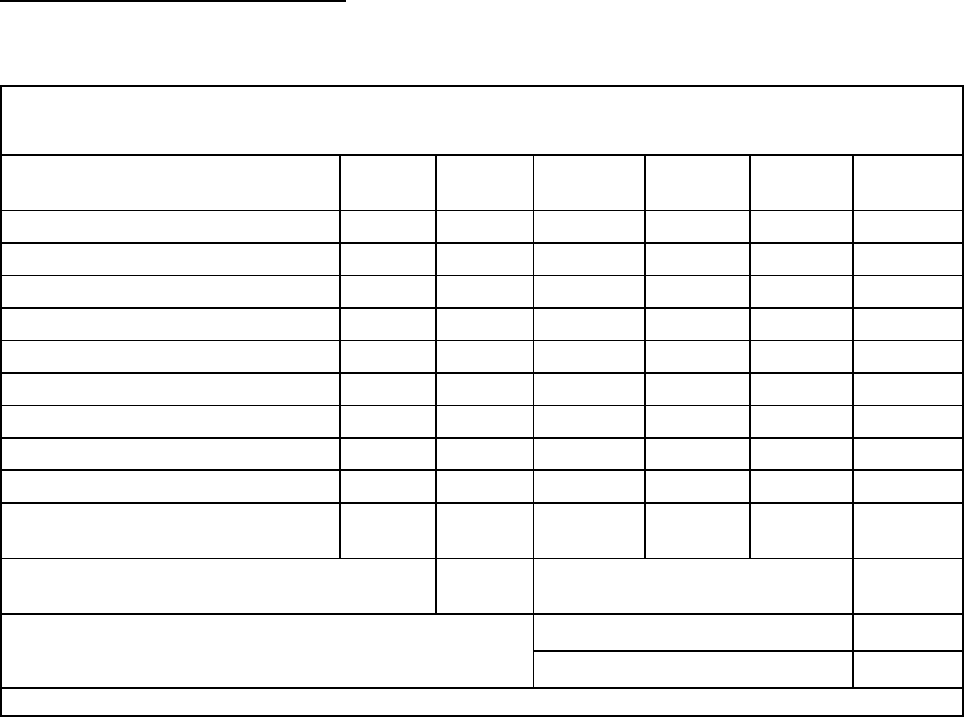
7
Economic and Demographic Data
The following table provides select demographic characteristics on the Northwest Iowa Assessment
Area.
Demographic Information of the Assessment Area
Assessment Area: Northwest Iowa
Demographic Characteristics #
Low
% of #
Moderate
% of #
Middle
% of #
Upper
% of #
NA*
% of #
Geographies (Census Tracts)
15
0.0
0.0
93.3
6.7
0.0
Population by Geography
35,256
0.0
0.0
90.6
9.4
0.0
Housing Units by Geography
17,802
0.0
0.0
90.7
9.3
0.0
Owner-Occupied Units by Geography
11,966
0.0
0.0
92.0
8.0
0.0
Occupied Rental Units by Geography
3,645
0.0
0.0
85.4
14.6
0.0
Vacant Units by Geography
2,191
0.0
0.0
92.9
7.1
0.0
Businesses by Geography
4,568
0.0
0.0
91.5
8.5
0.0
Farms by Geography
1,132
0.0
0.0
95.6
4.4
0.0
Family Distribution by Income Level
9,957
18.8
20.0
22.5
38.6
0.0
Household Distribution by Income
Level
15,611
21.9
16.6
19.6
42.0
0.0
Median Family Income Non-MSAs -
Iowa
$71,763
Median Housing Value
$105,357
Median Gross Rent
$631
Families Below Poverty Level
8.4%
Source: 2020 U.S. Census and 2022 D&B Data. Due to rounding, totals may not equal 100.0%.
The 2020 US Census data reveals that since the 2015 American Community Survey data,
population and housing has changed slightly. For instance, the population declined by 1,880
residents, or approximately 5.1 percent throughout this period. However, the total number of
housing units grew by 266 units, or approximately 1.5 percent. Of the 17,802 housing units in the
assessment area, 67.2 percent are owner-occupied, 20.5 percent are occupied rental units, and 12.3
percent are vacant.
Based on 2022 D&B data, the Northwest Iowa Assessment Area is dependent on agriculture with
19.9 percent of the assessment area businesses operating in agriculture. The number of farms in the
assessment area rose slightly based on 2017 Agricultural Census data. For instance, the number of
farms operating in counties included in the assessment area increased by 76, or 1.7 percent, between
the 2012 Agricultural Census and 2017 Agricultural Census. Further, 1,254 of the total 4,466
farming operations, or 28.1 percent, farm more than 500 acres each, confirming the presence of a
significant number of larger farming operations.
Employment opportunities remain prevalent within or near the assessment area, accounting for the
historically low unemployment levels during the vast majority of the evaluation period. The
unemployment rates for counties included in the assessment area ranged from 1.6 to 4.4 percent as
of May 2023, which is comparable to the State of Iowa’s unemployment rate of 2.6 percent as of the
same time. The unemployment rates were higher throughout part of the evaluation period due to the

8
COVID-19 pandemic, particularly during early 2020. However, labor statistic data confirms that
rates have generally trended downward since the end of the COVID-19 pandemic and remain low.
Competition
The Northwest Iowa Assessment Area is moderately competitive for financial services.
According to the FDIC Deposit Market Share data as of June 30, 2022, there were 25 financial
institutions operating 64 branches in the counties in the assessment area. Of these institutions,
SCSB ranked second with a 15.0 percent deposit market share. The bank competes with these
institutions, as well as credit unions and Farm Credit Services, for small farm and small
business loans.
Community Contact
As part of the evaluation process, examiners contact third parties active in the assessment area
to assist in identifying credit and community development needs. This information helps
determine whether local financial institutions are responsive to these needs. It also shows what
credit and community development opportunities are available.
Examiners reviewed a recent community contact conducted with a representative of a local
agricultural organization. The individual stated the area is dependent on agriculture and that the
farming community was really strong until inflation starting increasing. Many farmers still have a
lot of disposable income from stimulus and relief efforts. Land prices continue to escalate. Many
farmers have not needed credit because of high commodity prices. It is difficult for young farmers
to start out due to land, equipment, and input costs. USDA and Farm Service Agency offer
beginning farmer loans. There is strong competition among financial institutions and input dealers.
The contact said there are many hobby farms and that number will continue to rise. The contact
also indicated a significant need for affordable housing in the area.
Credit Needs
Based on information from the community contact, bank management, and demographic and
economic data, examiners concluded that small farm loans are the Northwest Iowa Assessment
Area’s primary credit need, followed by home mortgage loans and small business loans.
Furthermore, community development needs exist related to affordable housing, community
services for low- and moderate-income families, and economic development.
CONCLUSIONS ON PERFORMANCE CRITERIA IN NORTHWEST IOWA
ASSESSMENT AREA
LENDING TEST
SCSB demonstrated reasonable performance under the Lending Test in the Northwest Iowa
Assessment Area. Reasonable performance under the Borrower Profile criteria supports this
conclusion.
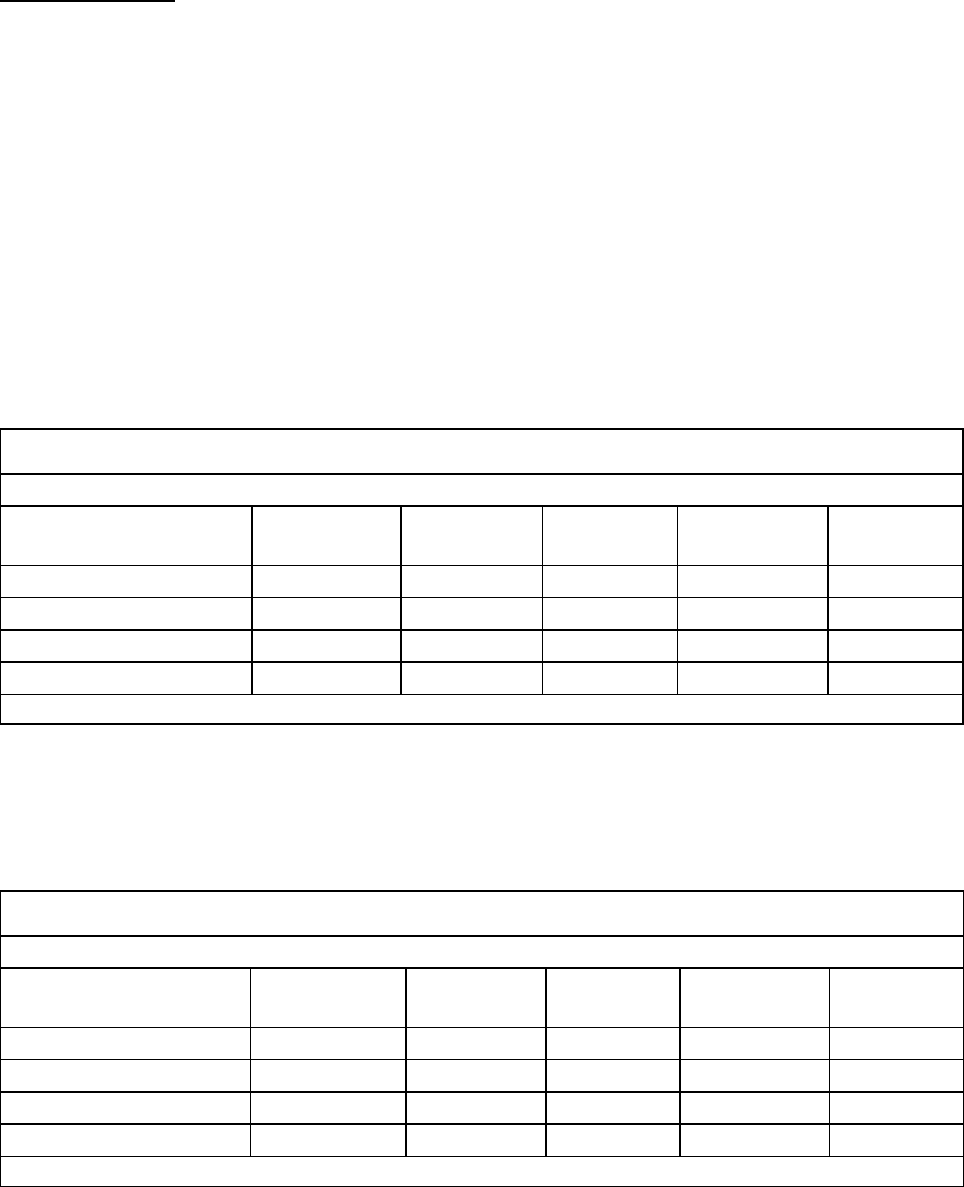
9
Borrower Profile
The distribution of borrowers reflects reasonable penetration among farms and businesses of
different sizes and individuals of different incomes. Reasonable small farm and small business
performance combined with excellent home mortgage lending performance supports this
conclusion.
Small Farm Loans
The distribution of borrowers reflects reasonable penetration among farms of different sizes. As
shown in the following table, the bank’s record of lending to farms with revenues of $1 million or
less slightly lagged 2022 D&B demographic data; however, several factors should be considered.
For example, 2017 Agricultural Census data confirms that there are 4,466 farming operations in the
counties included in this assessment area, with only 2,328, or 52.1 percent, reporting interest
expense. Moreover, 2017 Agricultural Census data reveals that 1,165 farms reported sales of less
than $2,500. This confirms that a large number of producers did not have any credit needs, which
are typically hobby farmers or smaller producers, which limits the bank’s opportunities to lend to
the smaller farms.
Distribution of Small Farm Loans by Gross Annual Revenue Category
Assessment Area: Northwest Iowa
Gross Revenue Level % of Farms # % $(000s) %
<=$1,000,000
99.0
52
88.1
3,661
67.7
>$1,000,000
0.5
7
11.9
2,147
32.3
Revenue Not Available
0.4
0
0.0
0
0.0
Total
100.0
59
100.0
5,808
100.0
Source: 2022 D&B Data, Bank Data. Due to rounding, totals may not equal 100.0%.
Small Business Loans
The distribution of borrowers reflects reasonable penetration among businesses of different sizes.
The bank’s lending activity, by number of loans, was generally in line with the percentage of
businesses with gross annual revenues of $1 million or less. The following table provides details.
Distribution of Small Business Loans by Gross Annual Revenue Category
Assessment Area: Northwest Iowa
Gross Revenue Level % of Businesses # % $(000s) %
<=$1,000,000
86.3
47
83.9
2,422
42.4
>$1,000,000
3.7
9
16.1
3,289
57.6
Revenue Not Available
10.0
0
0.0
0
0.0
Total
100.0
56
100.0
5,711
100.0
Source: 2022 D&B Data, Bank Data. Due to rounding, totals may not equal 100.0%.
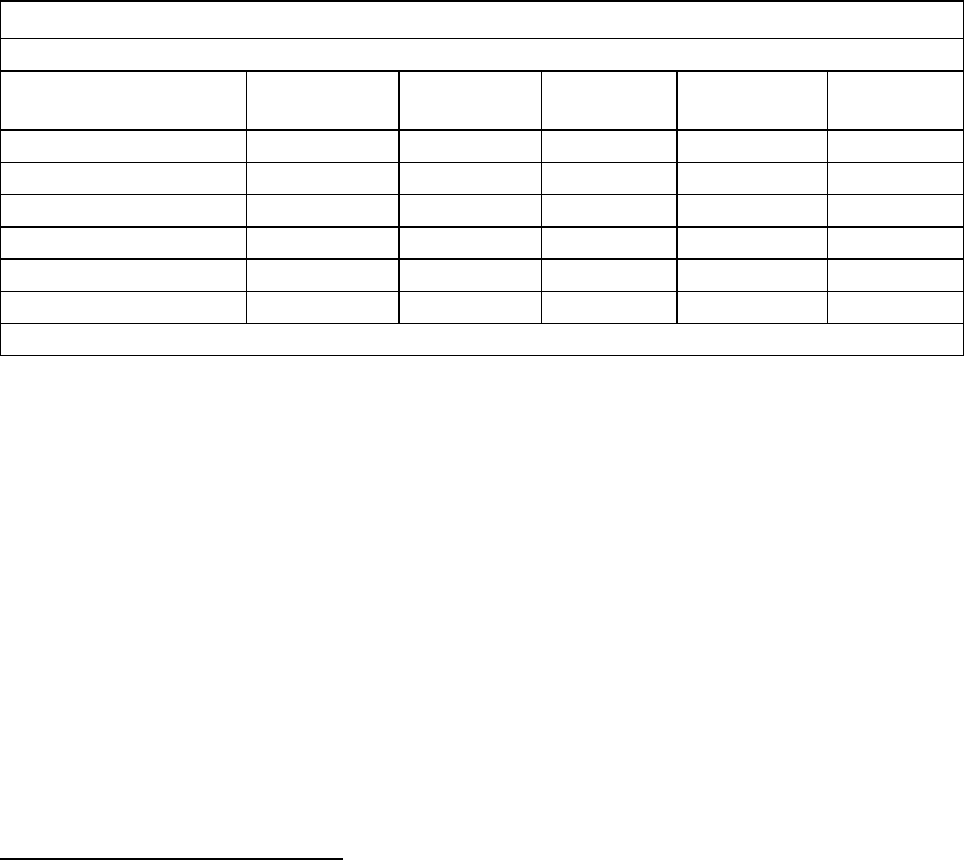
10
Home Mortgage Loans
The distribution of borrowers reflects excellent penetration among individuals of different income
levels. As shown in the following table, the bank’s lending levels to low-income and moderate-
income borrowers is comparable to the percentage of low- and moderate-income families located in
the assessment area. However, the bank’s level of lending to low-income borrower is particularly
noteworthy given the 8.4 percent poverty rate and the significant need for affordable housing in the
assessment area. Both of these factors limits opportunities for low-income families to find and afford
a home.
Distribution of Home Mortgage Loans by Borrower Income Level
Assessment Area: Northwest Iowa
Borrower Income Level % of Families # % $(000s) %
Low
18.8
9
18.8
554
13.5
Moderate
20.0
11
22.9
428
10.5
Middle
22.5
7
14.6
602
14.7
Upper
38.6
19
39.6
2,438
59.7
Not Available
0.0
2
4.2
65
1.6
Total
100.0
48
100.0
4,087
100.0
Source: 2020 U.S. Census; Bank Data. Due to rounding, totals may not equal 100.0%.
OMAHA-COUNCIL BLUFFS, NE-IA METROPOLITAN STATISTICAL
AREA ASSESSMENT AREA – Full-Scope Review
DESCRIPTION OF INSTITUTION’S OPERATIONS IN OMAHA-COUNCIL
BLUFFS, NE-IA METROPOLITAN STATISTICAL AREA ASSESSMENT
AREA
The Omaha-Council Bluffs, NE-IA Metropolitan Statistical Area Assessment Area is comprised of
census tracts 2905.00 in Harrison County and 0215.02 in Pottawattamie County. Both census tracts
are classified as middle income. The bank operates one full-service office and one ATM in this
assessment area located in Avoca, Iowa. This branch was opened February 16, 2021. As
previously noted, 16.2 percent of total loans and only 0.6 percent of the bank’s total deposits are
from this assessment area.
Economic and Demographic Data
The following table illustrates select demographic characteristics of the Omaha-Council Bluffs, NE-
IA MSA Assessment Area.
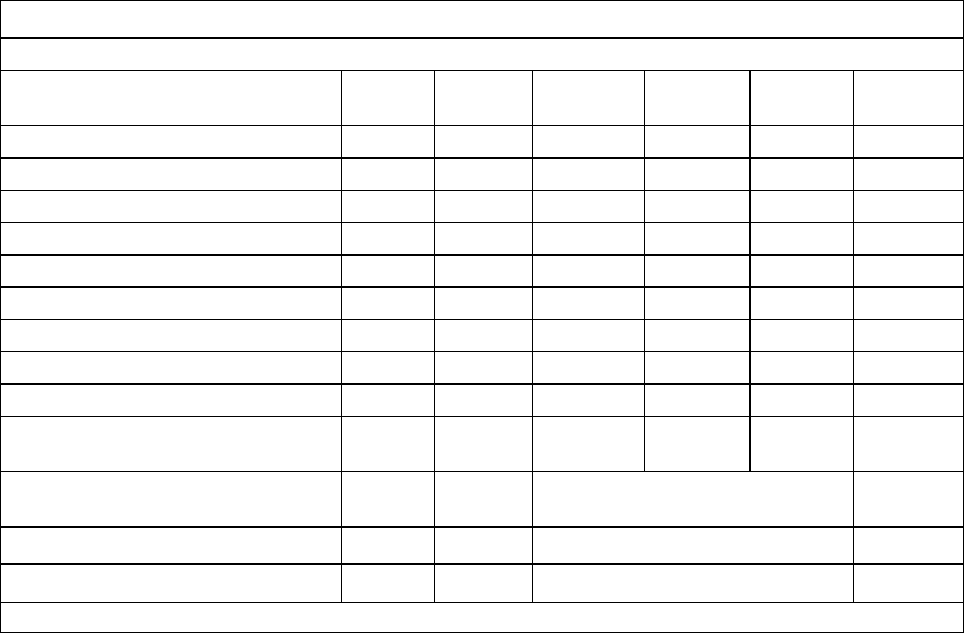
11
Demographic Information of the Assessment Area
Assessment Area: Omaha-Council Bluffs, NE-IA MSA
Demographic Characteristics #
Low
% of #
Moderate
% of #
Middle
% of #
Upper
% of #
NA*
% of #
Geographies (Census Tracts)
2
0.0
0.0
100.0
0.0
0.0
Population by Geography
5,502
0.0
0.0
100.0
0.0
0.0
Housing Units by Geography
2,423
0.0
0.0
100.0
0.0
0.0
Owner-Occupied Units by Geography
1,689
0.0
0.0
100.0
0.0
0.0
Occupied Rental Units by Geography
491
0.0
0.0
100.0
0.0
0.0
Vacant Units by Geography
243
0.0
0.0
100.0
0.0
0.0
Businesses by Geography
647
0.0
0.0
100.0
0.0
0.0
Farms by Geography
145
0.0
0.0
100.0
0.0
0.0
Family Distribution by Income Level
1,473
20.6
21.0
23.5
34.9
0.0
Household Distribution by Income
Level
2,180
25.9
18.1
18.6
37.5
0.0
Median Family Income MSA - 36540
Omaha-Council Bluffs, NE-IA MSA
$87,733
Median Housing Value
$153,715
Median Gross Rent
$728
Families Below Poverty Level
5.4%
Source: 2020 U.S. Census and 2022 D&B Data. Due to rounding, totals may not equal 100.0%.
The 2020 US Census data reveals since the 2015 American Community Survey data, population and
housing has increased. The population increased by 140 residents, or approximately 2.6 percent
throughout this period. In addition, the total number of housing units grew by 52 units, or
approximately 2.2 percent. Of the 2,423 housing units in the assessment area, 69.7 percent are
owner-occupied, 20.3 percent are occupied rental units, and 10.0 percent are vacant.
Based on 2022 D&B data, the Omaha-Council Bluffs, NE-IA Assessment Area is dependent on
agriculture with 18.3 percent of the assessment area businesses operating in agriculture. The
number of farms in the assessment area declined slightly based on 2017 Agricultural Census data.
For instance, the number of farms operating in counties included in the assessment area decreased
by 99, or 4.9 percent, between the 2012 Agricultural Census and 2017 Agricultural Census.
Further, 533 of the total 1,908 farming operations, or 27.9 percent, farm more than 500 acres each,
confirming the presence of a significant number of larger farming operations.
Employment opportunities remain prevalent within or near the assessment area, accounting for the
historically low unemployment levels during the vast majority of the evaluation period. The
unemployment rates for counties included in the assessment area ranged from 2.3 to 2.5 percent as
of May 2023, which is comparable to the State of Iowa’s unemployment rate of 2.6 percent as of the
same time. The unemployment rates were higher throughout part of the evaluation period due to the
COVID-19 pandemic, particularly during early 2020. However, labor statistic data confirms that
rates have generally trended downward since the end of the COVID-19 pandemic and remain low.
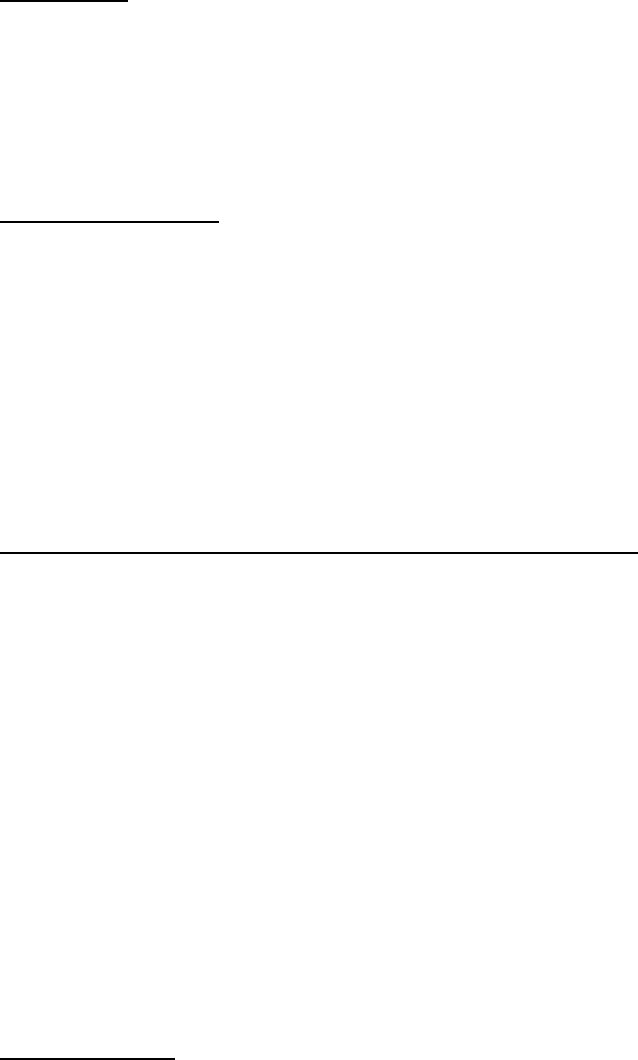
12
Competition
The Omaha-Council Bluffs, NE-IA MSA Assessment Area is moderately competitive for financial
services. According to the FDIC Deposit Market Share data as of June 30, 2022, there were 12
financial institutions operating 32 branches in the counties within the assessment area. Of these
institutions, SCSB ranked last with a 0.1 percent deposit market share. The bank competes with
these institutions, as well as credit unions and Farm Credit Services, for small farm and small
business loans.
Community Contacts
Examiners reviewed a community contact conducted with a representative from an organization that
connects Iowans with resources within the state. The contact stated the demographics of the area
are mixed between the Council Bluffs area and the rest of the county, which is more rural. In the
more rural areas, jobs are more related to agricultural and smaller “mom and pop” businesses. The
commercial sector continues to rebound from the pandemic with the biggest challenge being a
shortage of qualified workers. There is a high demand for labor and a limited number of available
employees. As a result, many businesses have been offering hiring incentives and flexible
scheduling to attract new workers. With regard to the farming economy, higher commodity prices
have helped offset higher input costs. There is a lack of affordable housing in the area and rising
interest rates have made it difficult to purchase a home.
Credit and Community Development Needs and Opportunities
Based on information from the community contact, bank management, and demographic and
economic data, examiners concluded that small farm loans are the Omaha-Council Bluffs, NE-
IA MSA Assessment Area’s primary credit need followed by small business and home
mortgage loans. Furthermore, community development needs exist related to affordable
housing, community services for low- and moderate-income families, and economic
development.
CONCLUSIONS ON PERFORMANCE CRITERIA IN THE OMAHA-
COUNCIL BLUFFS, NE-IA MSA AA
LENDING TEST
SCSB demonstrated reasonable performance under the Lending Test in the Omaha-Council Bluffs,
NE-IA MSA Assessment Area. Reasonable performance under the Borrower Profile criteria supports
this conclusion.
Borrower Profile
The distribution of borrowers reflects reasonable penetration among farms and businesses of
different sizes. Reasonable small farm and small business lending performance supports this
conclusion. Home mortgage loans are not a primary product in this assessment area and were not
reviewed.

13
Small Farm Loans
The distribution of borrowers reflects reasonable penetration among farms of different sizes. As
shown in the following table, the bank’s record of lending to farms with revenues of $1 million or
less slightly lags 2022 D&B demographic data; however, several factors should be considered. For
example, 2017 Agricultural Census data confirms that there are 1,908 farming operations in
counties included in this assessment area, with only 910, or 47.7 percent, reporting interest expense.
Moreover, 2017 Agricultural Census data reveals that 502 farms reported sales of less than $2,500.
This confirms that a large number of producers did not have any credit needs, which are typically
hobby farmers or smaller producers, which limits the bank’s opportunities to lend to the smaller
farms.
Distribution of Small Farm Loans by Gross Annual Revenue Category
Assessment Area: Omaha-Council Bluffs, NE-IA MSA
Gross Revenue Level % of Farms # % $(000s) %
<=$1,000,000
100.0
29
93.5
4,068
83.6
>$1,000,000
0.0
2
6.5
800
16.4
Revenue Not Available
0.0
0
0.0
0
0.0
Total
100.0
31
100.0
4,868
100.0
Source: 2022 D&B Data, Bank Data. Due to rounding, totals may not equal 100.0%.
Small Business Loans
The distribution of borrowers reflects reasonable penetration among businesses of different sizes.
The bank’s lending activity, by number of loans, was slightly above the percentage of businesses
with gross annual revenues of $1 million or less. The following table provides details.
Distribution of Small Business Loans by Gross Annual Revenue Category
Assessment Area: Omaha-Council Bluffs, NE-IA MSA
Gross Revenue Level % of Businesses # % $(000s) %
<=$1,000,000
86.6
17
89.5
929
41.7
>$1,000,000
2.3
2
10.5
1,300
58.3
Revenue Not Available
11.1
0
0.0
0
0.0
Total
100.0
19
100.0
2,229
100.0
Source: 2022 D&B Data, Bank Data. Due to rounding, totals may not equal 100.0%.
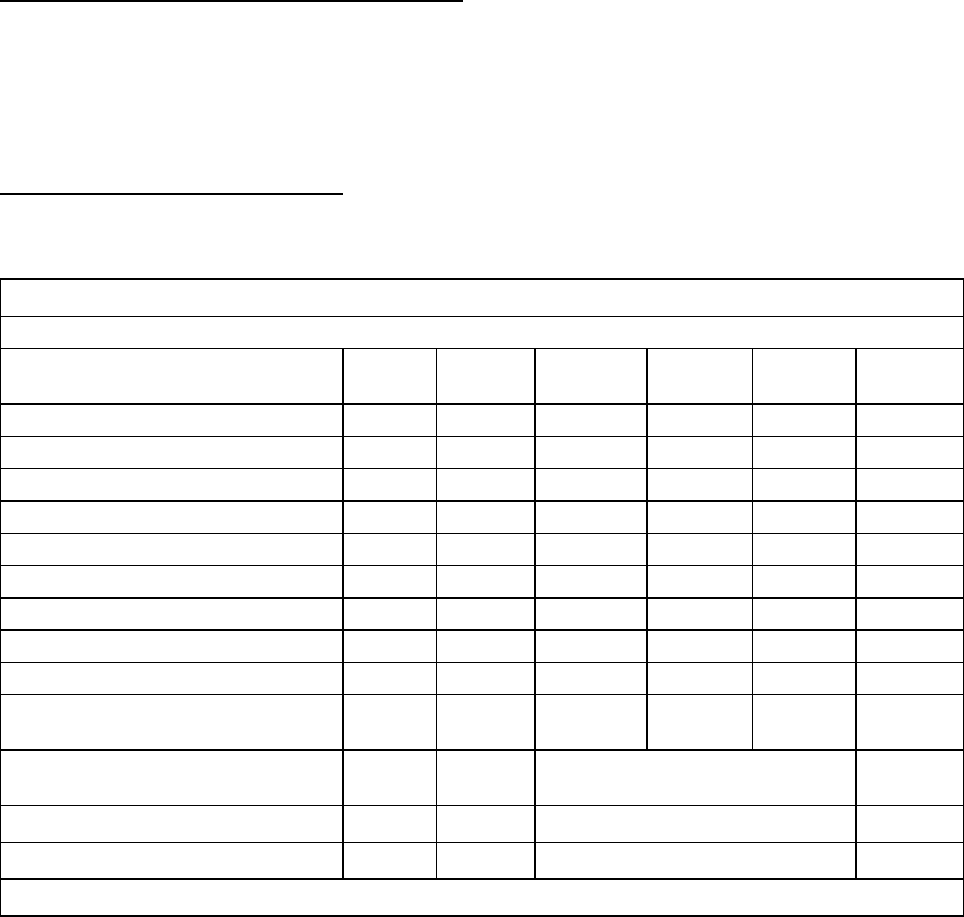
14
SIOUX CITY, IA-NE-SD MSA ASSESSMENT AREA – Full-Scope Review
DESCRIPTION OF INSTITUTION’S OPERATIONS IN THE SIOUX CITY,
IA-NE-SD MSA ASSESSMENT AREA
Sioux City, IA-NE-SD MSA Assessment Area
The Sioux City, IA-NE-SD MSA Assessment Area is comprised of census tract 0031.00 in
Woodbury County, Iowa. This census tract is classified as middle income. The bank operates one
full-service office and one ATM in this assessment area located in Danbury, Iowa. This branch was
acquired by the subject bank as of February 1, 2022. As previously noted, only 3.0 percent of the
bank’s total loans and 4.1 percent of total deposits are from this assessment area.
Economic and Demographic Data
The following table provides select demographic characteristics on the Sioux City, IA-NE-SD MSA
Assessment Area.
Demographic Information of the Assessment Area
Assessment Area: Sioux City, IA-NE-SD MSA
Demographic Characteristics #
Low
% of #
Moderate
% of #
Middle
% of #
Upper
% of #
NA*
% of #
Geographies (Census Tracts)
1
0.0
0.0
100.0
0.0
0.0
Population by Geography
3,660
0.0
0.0
100.0
0.0
0.0
Housing Units by Geography
1,870
0.0
0.0
100.0
0.0
0.0
Owner-Occupied Units by Geography
1,322
0.0
0.0
100.0
0.0
0.0
Occupied Rental Units by Geography
301
0.0
0.0
100.0
0.0
0.0
Vacant Units by Geography
247
0.0
0.0
100.0
0.0
0.0
Businesses by Geography
432
0.0
0.0
100.0
0.0
0.0
Farms by Geography
104
0.0
0.0
100.0
0.0
0.0
Family Distribution by Income Level
1,120
16.0
18.2
29.0
36.8
0.0
Household Distribution by Income
Level
1,623
21.5
17.7
22.4
38.4
0.0
Median Family Income MSA - 43580
Sioux City, IA-NE-SD MSA
$74,387
Median Housing Value
$89,700
Median Gross Rent
$672
Families Below Poverty Level
4.6%
Source: 2020 U.S. Census and 2022 D&B Data. Due to rounding, totals may not equal 100.0%.
The 2020 US Census data reveals since the 2015 American Community Survey data, the population
declined by 251 residents, or approximately 6.4 percent throughout this period. In addition, the
total number of housing units declined by 34 units, or approximately 1.8 percent. Of the 1,870
housing units in the assessment area, 70.7 percent are owner-occupied, 16.1 percent are occupied
rental units, and 13.2 percent are vacant.

15
Based on 2022 D&B data, the Sioux City, IA-NE-SD Assessment Area is dependent on agriculture
with 19.4 percent of the assessment area businesses operating in agriculture. The number of farms
in the assessment area rose slightly based on 2017 Agricultural Census data. For instance, the
number of farms operating in Woodbury Count increased by 64, or 6.6 percent, between the 2012
Agricultural Census and 2017 Agricultural Census. Further, 262 of the total 1,037 farming
operations, or 25.3 percent, farm more than 500 acres each, confirming the presence of a significant
number of larger farming operations.
Employment opportunities remain prevalent within or near the assessment area, accounting for the
historically low unemployment levels during the vast majority of the evaluation period. The
unemployment rates for Woodbury County was 2.5 percent as of May 2023, which is comparable to
the State of Iowa unemployment rate of 2.6 percent as of the same time. The unemployment rates
were higher throughout part of the evaluation period due to the COVID-19 pandemic, particularly
during early 2020. However, labor statistic data confirms that rates have generally trended
downward since the end of the COVID-19 pandemic and remain low.
Competition
The Sioux City, IA-NE-SD MSA Assessment Area is moderately competitive for financial services.
According to the FDIC Deposit Market Share data as of June 30, 2022, there were 21 financial
institutions operating 47 branches in counties within the assessment area. Of these institutions,
SCSB ranked 19
th
with a 0.6 percent deposit market share. The bank competes with these
institutions, as well as credit unions and Farm Credit Services, for small farm and small business
loans.
Community Contact
Examiners reviewed a recent community contact conducted with a representative of a local
economic development group that focuses on increasing and enhancing employment opportunities.
The individual stated the economy is heavily based on food processing plants and manufacturing.
There is a shortage of qualified workers. Wages have increased in the last few years with many
employers offering incentives to potential employees. There is not enough housing stock.
Reportedly, there are some housing projects underway but they are out of the reach of low- and
moderate-income individuals; however, it does open up some mid-level housing as middle-income
individuals ‘buy up’. The value of farm land has risen dramatically and is out of reach for
beginning farmers. The larger farm operations generally have more and larger credit needs while
smaller farms have less credit needs. Farmers seek credit from banks and input dealers.
Credit Needs
Based on information from the community contact, bank management, and demographic and
economic data, examiners concluded that small farm loans are the Sioux City, IA-NE-SD
Assessment Area’s primary credit need, followed by home mortgage loans and small business
loans. Furthermore, community development needs exist related to affordable housing, community
services for low- and moderate-income families, and economic development.
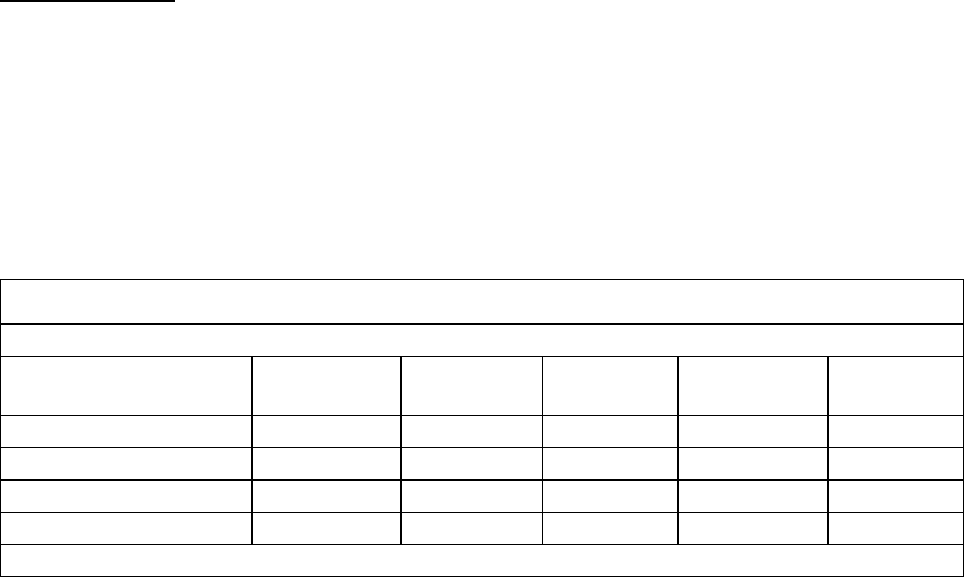
16
CONCLUSIONS ON PERFORMANCE CRITERIA IN THE SIOUX CITY, IA-
NE-SD MSA ASSESSMENT AREA
LENDING TEST
SCSB demonstrated reasonable performance under the Lending Test in the Sioux City, IA-NE-SD
MSA Assessment Area. Reasonable performance under the Borrower Profile criteria supports this
conclusion. This assessment area received the least amount of weight due to the limited deposit and
lending activity occurring in this area.
Borrower Profile
The distribution of borrowers reflects reasonable penetration among farms and businesses of
different sizes. The bank’s reasonable small farm and small business lending performance supports
this conclusion. Home mortgage loans are not a primary product in this assessment area and were
not reviewed.
Small Farm Loans
The distribution of borrowers reflects reasonable penetration among farms of different sizes. As
shown in the following table, the bank’s record of lending to farms with revenues of $1 million or
less slightly lags 2022 D&B demographic data; however, the performance is still reasonable.
Distribution of Small Farm Loans by Gross Annual Revenue Category
Assessment Area: Sioux City, IA-NE-SD MSA
Gross Revenue Level % of Farms # % $(000s) %
<=$1,000,000
99.0
34
91.9
2,142
83.6
>$1,000,000
1.0
3
8.1
420
16.4
Revenue Not Available
0.0
0
0.0
0
0.0
Total
100.0
37
100.0
2,562
100.0
Source: 2022 D&B Data, Bank Data. Due to rounding, totals may not equal 100.0%.
Small Business Loans
The distribution of borrowers reflects reasonable penetration among businesses of different sizes.
The bank’s lending activity, by number of loans, was slightly below the percentage of businesses
with gross annual revenues of $1 million or less. The following table provides details.

17
Distribution of Small Business Loans by Gross Annual Revenue Category
Assessment Area: Sioux City, IA-NE-SD MSA
Gross Revenue Level % of Businesses # % $(000s) %
<=$1,000,000
85.6
12
80.0
371
71.5
>$1,000,000
1.9
3
20.0
148
28.5
Revenue Not Available
12.5
0
0.0
0
0.0
Total
100.0
15
100.0
519
100.0
Source: 2022 D&B Data, Bank Data. Due to rounding, totals may not equal 100.0%.

18
APPENDICES
SMALL BANK PERFORMANCE CRITERIA
Lending Test
The Lending Test evaluates the bank’s record of helping to meet the credit needs of its assessment
area(s) by considering the following criteria:
1) The bank’s loan-to-deposit ratio, adjusted for seasonal variation, and, as appropriate, other
lending-related activities, such as loan originations for sale to the secondary markets,
community development loans, or qualified investments;
2) The percentage of loans, and as appropriate, other lending-related activities located in the
bank’s assessment area(s);
3) The geographic distribution of the bank’s loans;
4) The institution’s record of lending to and, as appropriate, engaging in other lending-related
activities for borrowers of different income levels and businesses and farms of different
sizes; and
5) The bank’s record of taking action, if warranted, in response to written complaints about its
performance in helping to meet credit needs in its assessment area(s).
19
GLOSSARY
Aggregate Lending: The number of loans originated and purchased by all reporting lenders in
specified income categories as a percentage of the aggregate number of loans originated and
purchased by all reporting lenders in the metropolitan area/assessment area.
American Community Survey (ACS): A nationwide United States Census survey that produces
demographic, social, housing, and economic estimates in the form of five year estimates based on
population thresholds.
Area Median Income: The median family income for the MSA, if a person or geography is
located in an MSA; or the statewide nonmetropolitan median family income, if a person or
geography is located outside an MSA.
Assessment Area: A geographic area delineated by the institution under the requirements of the
Community Reinvestment Act.
Census Tract: A small, relatively permanent statistical subdivision of a county or equivalent
entity. The primary purpose of census tracts is to provide a stable set of geographic units for the
presentation of statistical data. Census tracts generally have a population size between 1,200 and
8,000 people, with an optimum size of 4,000 people. Census tract boundaries generally follow
visible and identifiable features, but they may follow nonvisible legal boundaries in some
instances. State and county boundaries always are census tract boundaries.
Combined Statistical Area (CSA): A combination of several adjacent metropolitan statistical
areas or micropolitan statistical areas or a mix of the two, which are linked by economic ties.
Consumer Loan(s): A loan(s) to one or more individuals for household, family, or other personal
expenditures. A consumer loan does not include a home mortgage, small business, or small farm
loan. This definition includes the following categories: motor vehicle loans, credit card loans, home
equity loans, other secured consumer loans, and other unsecured consumer loans.
Core Based Statistical Area (CBSA): The county or counties or equivalent entities associated
with at least one core (urbanized area or urban cluster) of at least 10,000 population, plus adjacent
counties having a high degree of social and economic integration with the core as measured through
commuting ties with the counties associated with the core. Metropolitan and Micropolitan
Statistical Areas are the two categories of CBSAs.
Family: Includes a householder and one or more other persons living in the same household who
are related to the householder by birth, marriage, or adoption. The number of family households
always equals the number of families; however, a family household may also include non-relatives
living with the family. Families are classified by type as either a married-couple family or other
family. Other family is further classified into “male householder” (a family with a male
householder and no wife present) or “female householder” (a family with a female householder and
no husband present).
20
FFIEC-Estimated Income Data: The Federal Financial Institutions Examination Council (FFIEC)
issues annual estimates which update median family income from the metropolitan and
nonmetropolitan areas. The FFIEC uses American Community Survey data and factors in
information from other sources to arrive at an annual estimate that more closely reflects current
economic conditions.
Full-Scope Review: A full-scope review is accomplished when examiners complete all applicable
interagency examination procedures for an assessment area. Performance under applicable tests is
analyzed considering performance context, quantitative factors (e.g, geographic distribution,
borrower profile, and total number and dollar amount of investments), and qualitative factors (e.g,
innovativeness, complexity, and responsiveness).
Geography: A census tract delineated by the United States Bureau of the Census in the most recent
decennial census.
Home Mortgage Disclosure Act (HMDA): The statute that requires certain mortgage lenders that
do business or have banking offices in a metropolitan statistical area to file annual summary reports
of their mortgage lending activity. The reports include such data as the race, gender, and the
income of applicants; the amount of loan requested; and the disposition of the application
(approved, denied, and withdrawn).
Home Mortgage Loans: Includes closed-end mortgage loans or open-end line of credits as defined
in the HMDA regulation that are not an excluded transaction per the HMDA regulation.
Housing Unit: Includes a house, an apartment, a mobile home, a group of rooms, or a single room
that is occupied as separate living quarters.
Limited-Scope Review: A limited-scope review is accomplished when examiners do not complete
all applicable interagency examination procedures for an assessment area.
Performance under applicable tests is often analyzed using only quantitative factors (e.g, geographic
distribution, borrower profile, total number and dollar amount of investments, and branch
distribution).
Low-Income: Individual income that is less than 50 percent of the area median income, or a
median family income that is less than 50 percent in the case of a geography.
Market Share: The number of loans originated and purchased by the institution as a percentage of
the aggregate number of loans originated and purchased by all reporting lenders in the metropolitan
area/assessment area.
Median Income: The median income divides the income distribution into two equal parts, one
having incomes above the median and other having incomes below the median.
Metropolitan Division (MD): A county or group of counties within a CBSA that contain(s) an
urbanized area with a population of at least 2.5 million. A MD is one or more main/secondary
counties representing an employment center or centers, plus adjacent counties associated with the
main/secondary county or counties through commuting ties.
21
Metropolitan Statistical Area (MSA): CBSA associated with at least one urbanized area having a
population of at least 50,000. The MSA comprises the central county or counties or equivalent
entities containing the core, plus adjacent outlying counties having a high degree of social and
economic integration with the central county or counties as measured through commuting.
Middle-Income: Individual income that is at least 80 percent and less than 120 percent of the area
median income, or a median family income that is at least 80 and less than 120 percent in the case
of a geography.
Moderate-Income: Individual income that is at least 50 percent and less than 80 percent of the
area median income, or a median family income that is at least 50 and less than 80 percent in the
case of a geography.
Multi-family: Refers to a residential structure that contains five or more units.
Nonmetropolitan Area (also known as non-MSA): All areas outside of metropolitan areas. The
definition of nonmetropolitan area is not consistent with the definition of rural areas. Urban and
rural classifications cut across the other hierarchies. For example, there is generally urban and rural
territory within metropolitan and nonmetropolitan areas.
Owner-Occupied Units: Includes units occupied by the owner or co-owner, even if the unit has
not been fully paid for or is mortgaged.
Rated Area: A rated area is a state or multistate metropolitan area. For an institution with
domestic branches in only one state, the institution’s CRA rating would be the state rating. If an
institution maintains domestic branches in more than one state, the institution will receive a rating
for each state in which those branches are located. If an institution maintains domestic branches in
two or more states within a multistate metropolitan area, the institution will receive a rating for the
multistate metropolitan area.
Rural Area: Territories, populations, and housing units that are not classified as urban.
Small Business Loan: A loan included in “loans to small businesses” as defined in the
Consolidated Report of Condition and Income (Call Report). These loans have original amounts of
$1 million or less and are either secured by nonfarm nonresidential properties or are classified as
commercial and industrial loans.
Small Farm Loan: A loan included in “loans to small farms” as defined in the instructions for
preparation of the Consolidated Report of Condition and Income (Call Report). These loans have
original amounts of $500,000 or less and are either secured by farmland, including farm residential
and other improvements, or are classified as loans to finance agricultural production and other loans
to farmers.
Upper-Income: Individual income that is 120 percent or more of the area median income, or a
median family income that is 120 percent or more in the case of a geography.
Urban Area: All territories, populations, and housing units in urbanized areas and in places of
2,500 or more persons outside urbanized areas. More specifically, “urban” consists of territory,
22
persons, and housing units in places of 2,500 or more persons incorporated as cities, villages,
boroughs (except in Alaska and New York), and towns (except in the New England states, New
York, and Wisconsin).
“Urban” excludes the rural portions of “extended cities”; census designated place of 2,500 or more
persons; and other territory, incorporated or unincorporated, including in urbanized areas.
Secon 2 ‐ Branch Locaons

Shelby County State Bank
Hours of Operation
Harlan Locations
800-574-3531
www.scsbnet.com
Main Bank
Lobby: 508 Cour Street, PO Box 29
Harlan, IA 51537
Phone: 712-755-5112
Monday-Friday 8:00 AM-4:00 PM
Drive-in: Monday - Thursday 8:00 AM - 4:00 PM
Friday - 8:00 AM - 5:00 PM
Census Tract 9604. 00
West Branch
Lobby: 2010 23rd Street
Harlan, Iowa 51537
Phone: 712-755-7671
Monday-Friday 8:00 AM-4:00PM
Drive-in: Monday - Friday 8:00 AM -5:00 PM
Saturday - 8:00 AM - Noon
Census Tract 9603.00
Elm Crest Retirement Community
2104 12
th
Street
Harlan, IA 51537
Phone: 712-755-5174
Hours of Business: no visits are made to this location.
Census Tract 9603.00
Avoca, Iowa
155 S Elm Street
Avoca, Iowa 51521
Phone: 712-307-6670
Lobby
Monday
-
Friday
8:00
AM
-
4:00
PM
Drive-in
Monday
-
Thursday
8:00
AM
-
4:00
PM
Friday
8:00
AM
-
5:00
PM
Census Tract 215.02

Elk Horn, Iowa
4039 Main Street
Elk Horn, Iowa 51531
Phone: 712-764-5067
Lobby & Drive-in:
Monday
-
Thursday
8:00
AM
-
3:30
PM
Friday 8:00 AM
-
5:00 PM
Drive-in
only
Saturday
8:00
AM
-
11:00
AM
Census Tract 9601.00
Panama, Iowa
102 Main Street
Panama, Iowa 51562
Phone: 712-489-2424
Lobby
&
Monday
-
Thursday
8:00
AM
-
3:30
PM
Drive-in:
Friday
8:00
AM
-
4:00
PM
Census
Tract
9602.
00
Portsmouth, Iowa
111Main Street
Portsmouth, IA 51565
Phone: 712-743-2715
Lobby
Monday
-
Thursday
8:00
AM
-
3
:30
PM
&
Drive-in
Friday
8:00
AM
-4:00
PM
Census
Tract
9602.00
Irwin, Iowa
512 Ann Street
Irwin, Iowa 51446
Phone: 712-782-3155
Lobby
Monday
-
Thursday
8:00
AM
-
3:30
PM
Friday
8:00 AM
-
5:00 PM
Census Tract 960 l.00
Shelby, Iowa
425 East Street
Shelby, Iowa 51570
Phone: 712-544-2626
Lobby
Monday
-
Friday 8:00 AM
-
4:00 PM
Drive-in
Monday
-
Thursday 8:00 AM – 4:00 PM
Friday 8:00 AM – 5:00 PM
Saturday 8:00 AM – 11:00 AM
Census Tract 9602.00

Ida Grove, Iowa
200 Moorehead Avenue
Ida Grove, Iowa 51445
Phone: 712-364-3181
Lobby
Monday
-
Thursday
9:00
AM
-
3
:00
PM
Friday
9:00
AM
-
5:00
PM
Drive-in
Monday
-
Friday
8:00
AM
-
5:00
PM
Census Tract 903.00
Battle Creek, Iowa
502 2
nd
Street
Battle Creek, Iowa 51006
Phone: 712-365-4341
Lobby
Monday-
Thursday
9:00
AM
-
3:00
PM
&
Drive-in
Friday
9:00
AM
-
5:00
PM
Census Tract 902.00
Danbury, Iowa
202 Main Street
Danbury, lowa 51019
Phone: 712-883-2161
Lobby
Monday
-
Thursday
9:00
AM
-
3:00
PM
&
Drive-in
Friday 9:00 AM
-
5:00 PM
Census Traci 31.00
Mapleton, Iowa
414 Main Street
Mapleton, Iowa 51034
Phone: 712-881-2161
Lobby
Monday
-
T
h
ursday
9:00
AM
-
3:00
PM
Friday 9:00 AM
-
5:00 PM
Census Tract 9601.00
Odebolt, Iowa
100 S Main Street
Odebolt, IA 51458
Phone: 712-668-2218
Lobby
Monday
-
Thursday
9:00
AM
-
3:00
PM
Friday 9:00 AM
-
5:00 PM
Census Tract 802. 00
Section 3 ‐ Branch Openings and Closings

Branch Openings: Shelby County State Bank merged with First State Bank on February 1, 2022.
Listed are the locations
Ida Grove, Iowa
200 Moorehead Avenue
Ida Grove, Iowa 51445
Phone: 712-364-3181
Lobby
Monday
-
Thursday
9:00
AM
-
3
:00
PM
Friday
9:00
AM
-
5:00
PM
Drive-in
Monday
-
Friday
8:00
AM
-
5:00
PM
Census Tract 903.00
Battle Creek, Iowa
502 2
nd
Street
Battle Creek, Iowa 51006
Phone: 712-365-4341
Lobby
Monday-
Thursday
9:00
AM
-
3:00
PM
&
Drive-in
Friday
9:00
AM
-
5:00
PM
Census Tract 902.00
Danbury, Iowa
202 Main Street
Danbury, lowa 51019
Phone: 712-883-2161
Lobby
Monday
-
Thursday
9:00
AM
-
3:00
PM
&
Drive-in
Friday 9:00 AM
-
5:00 PM
Census Traci 31.00
Mapleton, Iowa
414 Main Street
Mapleton, Iowa 51034
Phone: 712-881-2161
Lobby
Monday
-
T
h
ursday
9:00
AM
-
3:00
PM
Friday 9:00 AM
-
5:00 PM
Census Tract 9601.00
Odebolt, Iowa
100 S Main Street
Odebolt, IA 51458
Phone: 712-668-2218
Lobby
Monday
-
Thursday
9:00
AM
-
3:00
PM
Friday 9:00 AM
-
5:00 PM
Census Tract 802. 00
Closed Branches: N/A
Section4ͲBranchServices
Thissectionincludesproducts,services,and alistingofATMs.
Listing of services generally offered at the bank’s branches – along with any differences by
branch.
Loans
Loan officers are available to match your credit needs to our offering of loan products. We offer
consumer loans for home purchase, refinance and improvement or equity, car loans, personal loans,
and Home Equity Lines of Credit. We also offer commercial business loans and agricultural loans for
operating, equipment/capital purchases and real estate. The bank participates and offers loan
programs through SBA, FSA, IFA First-Time Homebuyers, Long-term Residential mortgages. The
Shelby County State Bank is an equal opportunity lender.
Checking and Savings Accounts
We have various checking and savings accounts available (consumer and business). See attached
Appendix A-3 and A-4 for consumer and business accounts currently available.
IRA, SEP IRA/Simple IRA, Coverdell Savings Accounts, Roth IRA, and Health Savings
Accounts
We can help you save for retirement. Turn a small investment into a sizable amount with tax- sheltered
dollars. Our rates are very competitive and can change quarterly. Please inquire.
Time Certificates of Deposit
We have CDs of various maturities. Rate changes on Certificates of Deposits are effective every
Monday. Watch our specials. Please inquire at our main bank or any branch offices.
Direct Deposit
For your convenience, government, pension, and payroll checks can be directly deposited at the
Shelby County State Bank at no charge.
Commanders Club
If you have reached the age of 55, you are eligible to become a Commander. Commanders enjoy many free or
reduced cost bank services. As a commander you may attend special events and seminars, take trips and tours,
receive the Commanders newsletter and much more. To find out more about our Commanders Club, please
call us at 712-755-5112.
Automated Teller Machines (ATM)
Locations: Main Bank and West Branch in Harlan, Avoca Bank, Elk Horn Bank, Panama Bank, Shelby Bank,
Battle Creek Bank, Danbury Bank, Mapleton Bank, Ida Grove has 2 ATMs located at Food Pride and Cenex.
In Ute the ATM is located at Sparetime Bar and Grill.
SCSB ATM & Debit Cards
We have ATM & Debit Cards for your convenience. These can be used in place of writing a check. It may also
be used as a cash card at the ATM.
Safety Deposit Boxes
Boxes are available in all branches, except the nursing home. The annual fee and box size are included with the
fee’s worksheet.
Bank by Mail
This service is available at no charge.
Overdraft Protection – Driver Fix
Upon approval, you may set up automatic transfers from one account to another.
FDIC Insurance Protection
Each depositor is insured up to at least $250,000 by Federal Deposit Insurance Corporation (FDIC). Properly
established accounts in individual, joint and trust account ownership can increase your insurance coverage.
Please ask for further details.
XPRESS Banking
A service provided which allows you to bank by telephone 24 hours a day, 365 days a year. Call 712-755-7921
or toll free 888-755-5112 is available for the Harlan, Avoca, Elk Horn, Panama, Portsmouth, Irwin and Shelby
locations.
Night Deposit
A night depository is available at our offices in Harlan the main bank, West Branch, Elk Horn, Panama,
Portsmouth, Irwin, Shelby, Avoca, Ida Grove, Battle Creek, Danbury and Mapleton.
ACH Origination
The Shelby County State Bank has the capability of originating ACH payments, transfers, deposits, and loan
payments. Please inquire at the main bank.
Home Equity Line of Credit/Check Reserve Accounts
You may now protect your checking account from costly overdraft fees with either of these products. Interest
may be tax deductible on the Home Equity Line of Credit. (Consult your accountant for details)
Full Line of Insurance Products
FNIC- Trusted Insurance Advisors is located in the Shelby office offering a full line of Life, Health, Long Term
Care, Auto, Home, Commercial, Farm and Crop Hail.
24 Hour Banker Online
Online banking service, which allows customers (consumer and business) to access all their primary account
relationships with the bank through an internet connection. BillPay allows for payment of bills online, transfer
funds and access account history on banking products.
Mobile Banking
Mobile Banking is a free service available to all customers by downloading the Shelby County State Bank app
on their mobile device. Mobile Banking allows customers to check their deposit account and loan balances and
history, transfer funds, make payments, view and search their transaction history. Customers can receive alerts
via email about account activity and checks can be deposited within the mobile app.
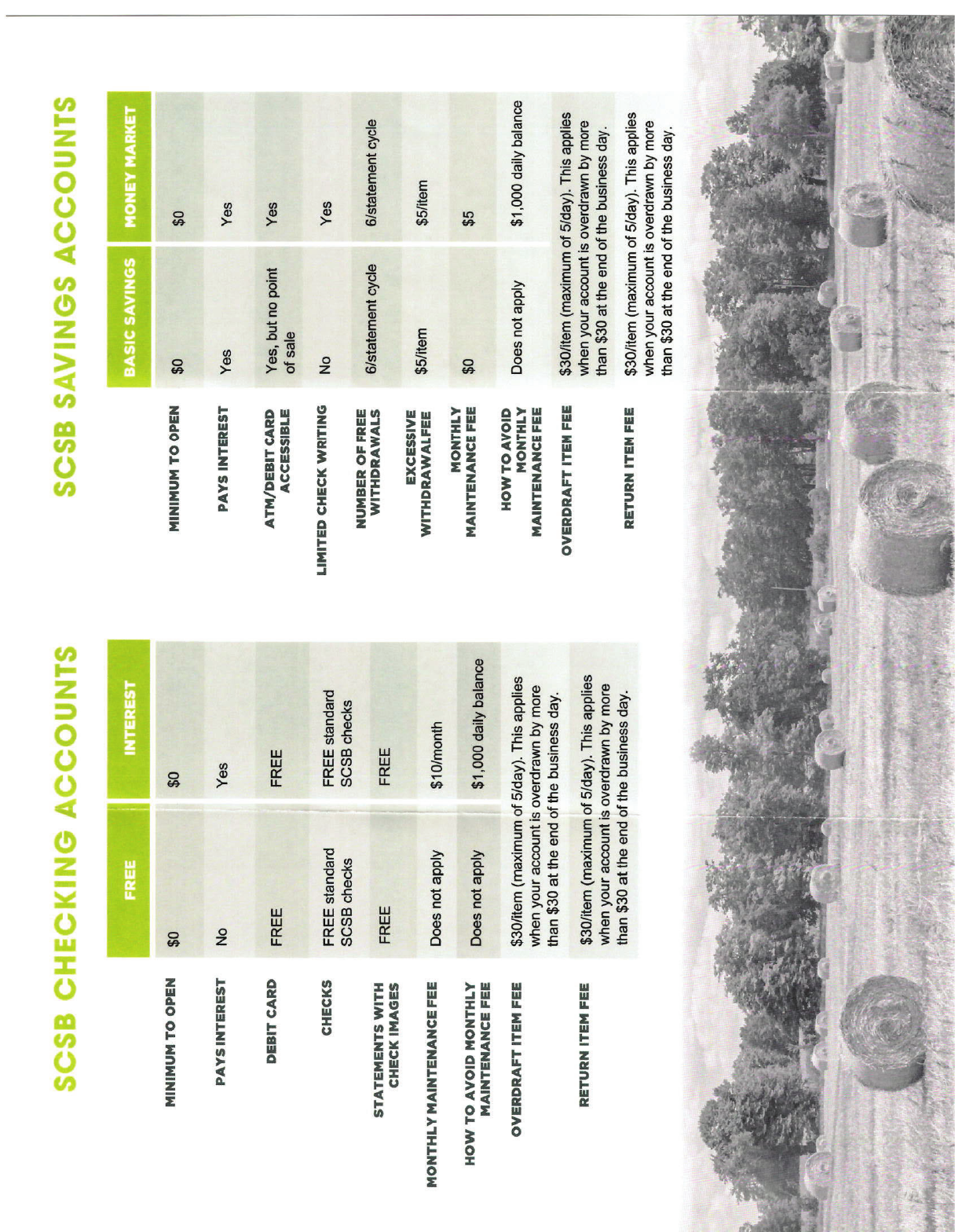
"QQFOEJY"
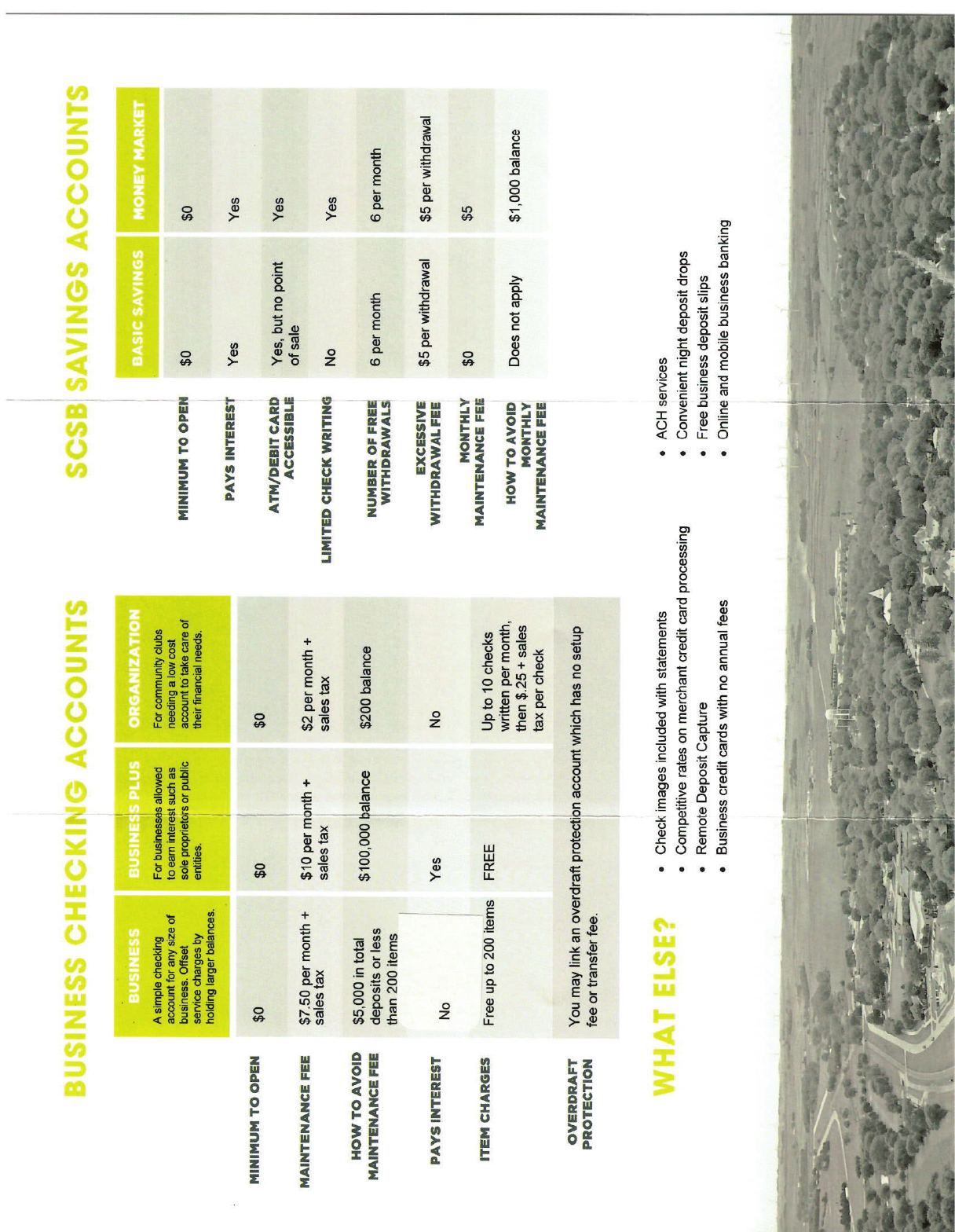
"QQFOEJY"
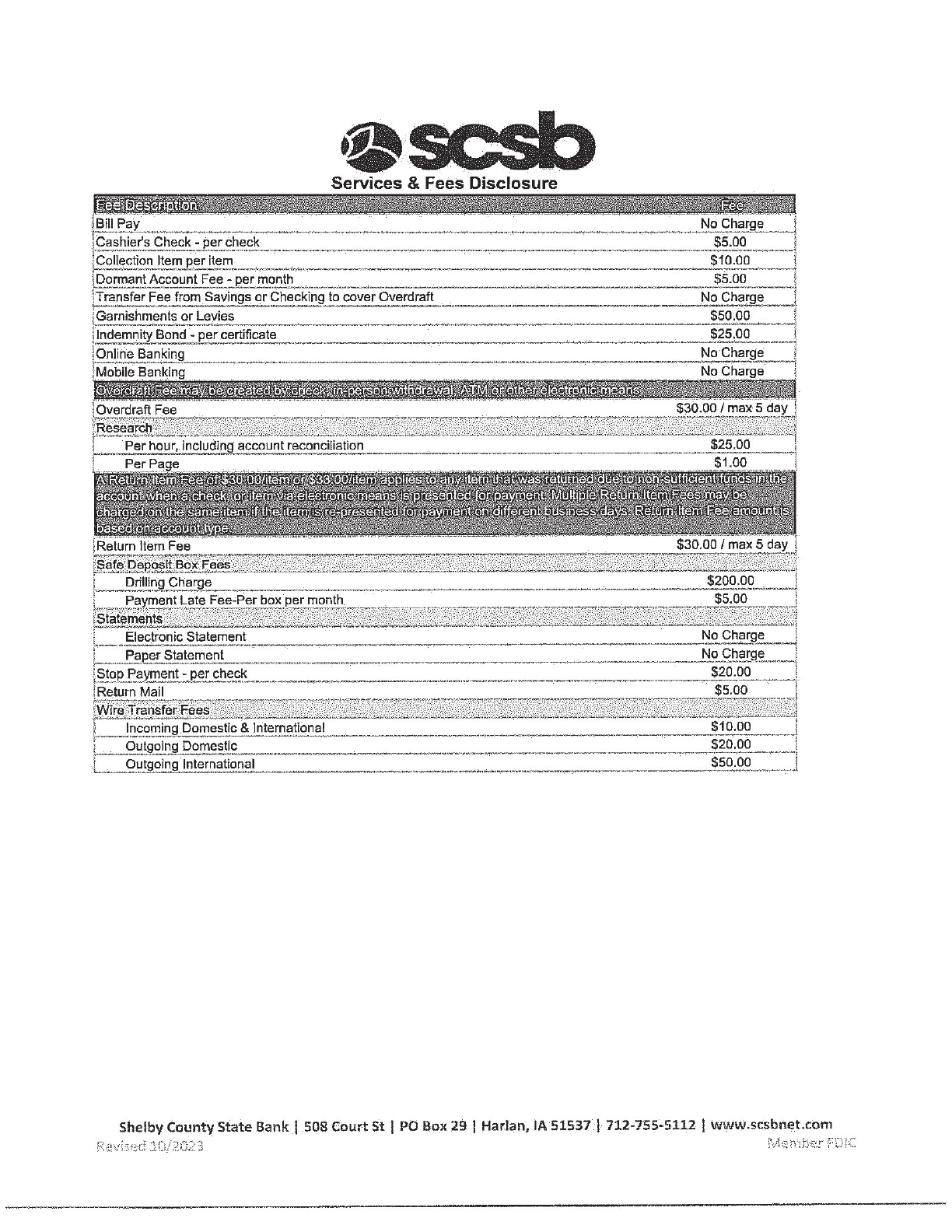
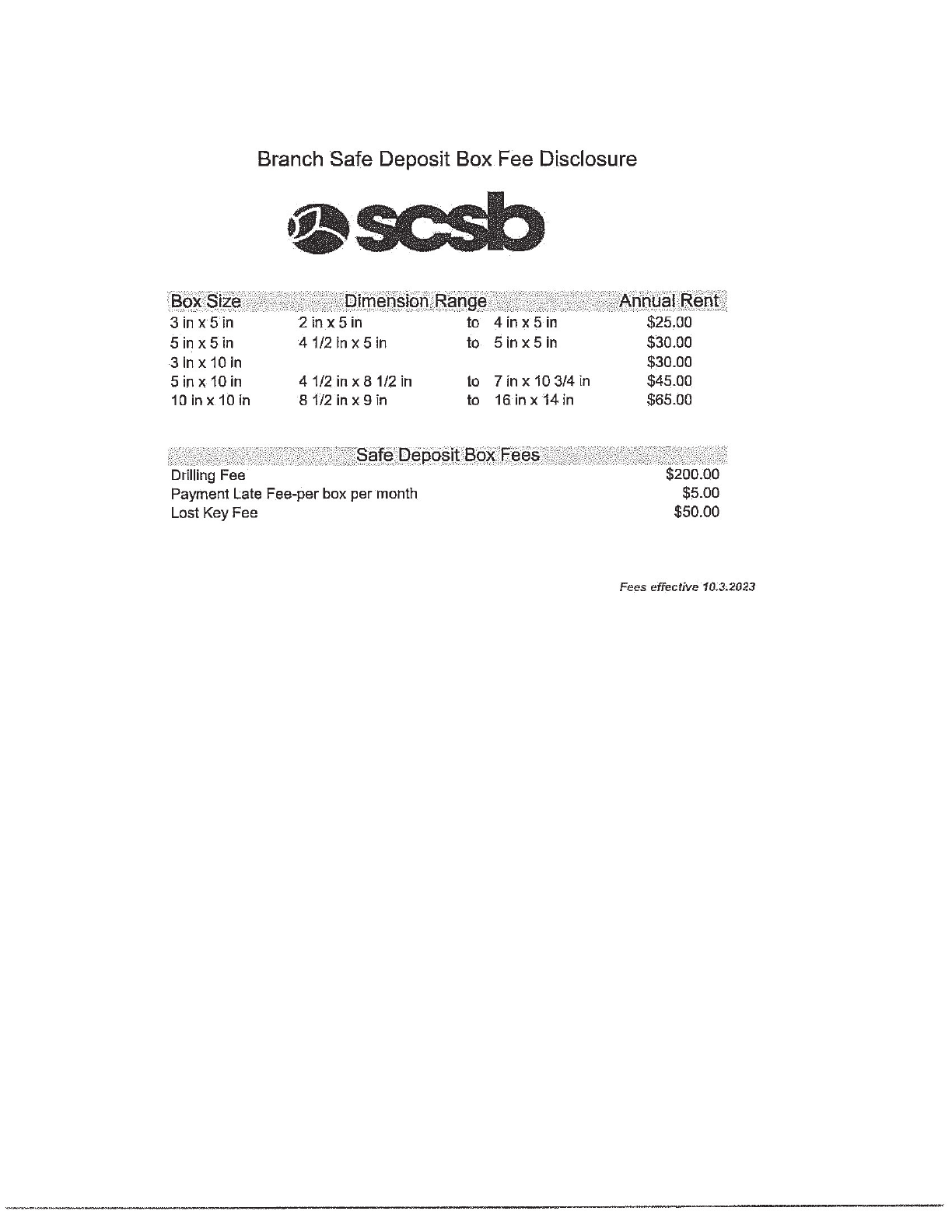
Section5ͲAssessmentAreaMaps
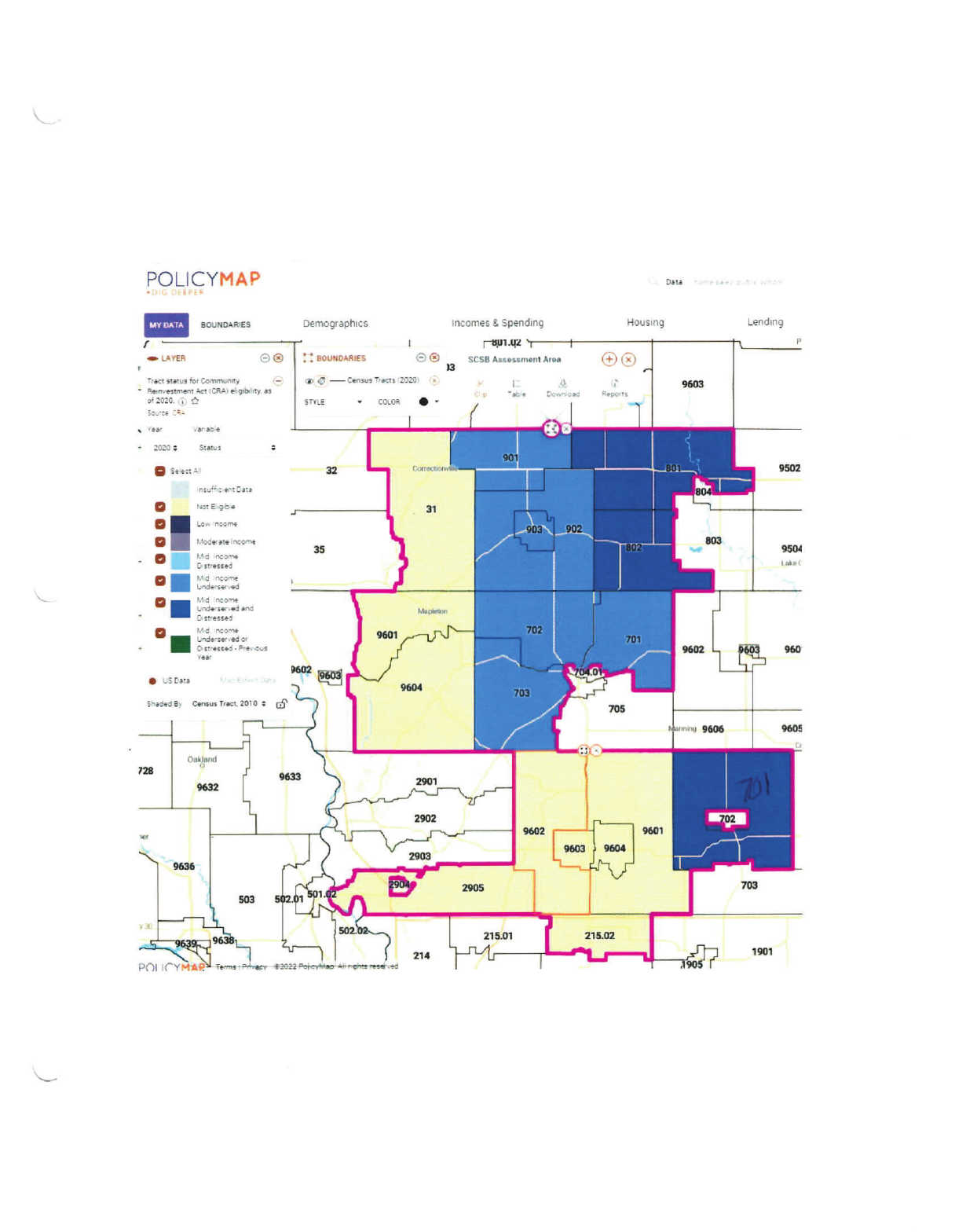
4$4#"TTFTTNFOU"SFB
"QQFOEJY"
Section6Ͳ>ŽĂŶƚŽĞƉŽƐŝƚZĂƚŝŽƐ
2022 Loan/Deposit Ratios
March 31, 2022
$328,965,748
$518,838,008
63.40%
June 30, 2022
$333,292,302
$494,235,851
67.44%
September 30, 2022
$340,451,090
$487,701,417
69.81%
December 31, 2022
$355,557,704
$476,311,841
74.65%
2023 Loan/Deposit Ratios
March 31, 2023
$337,545,559
$485,869,290
69.47%
June 30, 2023
$328,373,026
$471,289,988
69.68%
September 30, 2023
$337,751,982
$477,560,838
70.72%
December 31, 2023
$354,154,372
$472,050,995
75.02%
Section7‐HMDADisclosureStatements

HMDA Disclosure Statements may be obtained on the Consumer Financial Protection Bureau’s Web site
at www.consumerfinance.gov/hmda (http://www.consumerfinance.gov/hmda).
Section8‐PublicComments
Public Comments
Per 12 C.F.R. Part 25.43 (a)(1) the Public File must include all written comments received from the public
for the current year and each of the prior two calendar years that specifically relate to the bank’s
performance in helping to meet community credit needs, and any response to the comments by the bank,
if neither the comments nor the responses contain statements that reflect adversely on the good name or
reputation of any persons other than the bank or publication of which would violate specific provisions of
law;
Shelby County State Bank does not have any written comments from the public for the current year or the
prior two calendar years.
